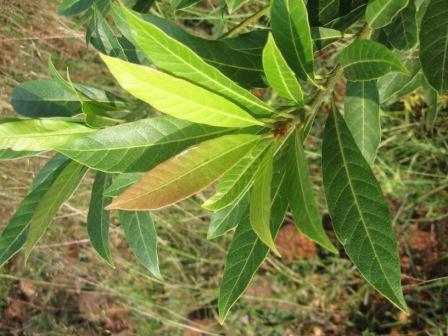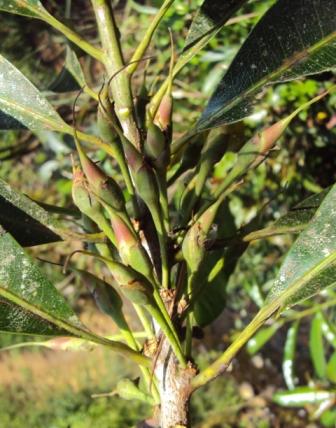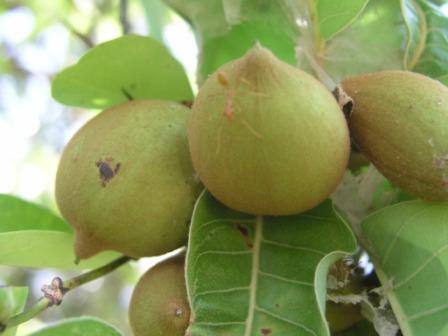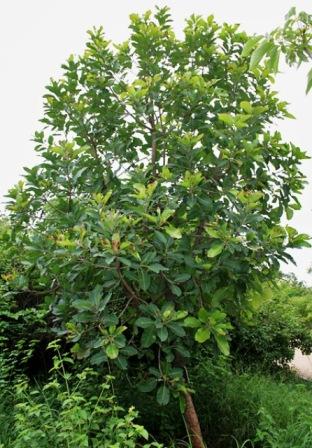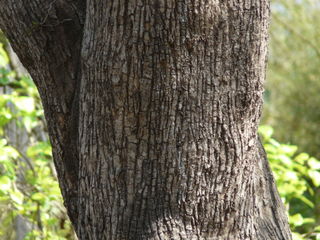Natural Regeneration :
- naturally raised by seeds
Artificial Regeneration :
- Propagated by seedlings, Cuttings.
Seed collection and Storage :
- Fruits fall on the ground after maturation in the July (monsoon period)
- The seeds may be collected after natural seed fall or by vigorous shaking of the branches.
- Seeds are separated from the fruit flesh by rubbing the fruits manually and thorough washing.
- Germination percentage is high in fresh seeds (80-100%).
- Viability capacity is 35 % only.
- Seed weight collected from different sources is 420-670 seeds/kg.
Seed Treatment :
- No seed treatment is necessary.
Nursery Technique :
- Seeds are directly dibbled into polybags with soil, sand and FYM in the ratio of 1:1:1 or 2:1:1.
- Soil with high clay content should be avoided.
- Fresh seeds should be graded and large size seeds are sown in polybags at the rate of two seeds per bag.
Plantation technique :
Polybags planting:
- In dry localities pits of 45 cm3 and in moist locality pits of 30 cm3 are dug for planting.
- Seedling of 6 -12 month old are out planted into the above pits during the rainy season.
- The spacing normally applied is 3x 3 m or 5 x 5 m.
Care & Disease Control :
Interculture and Maintenance Practices :
Initially NPK fertilizers @ 0.05-0.10 kg/plant is recommended once during the rainy season in the first year. Its doses may be enhanced in subsequent years depending upon the age of the plants. Usually additional Nitrogen may be applied after six months to boast growth. Hoeing and weeding is required during first ten years of growth.
Irrigation Practices :
Crop requires irrigation at 15 days interval during dry seasons mainly from December to May in early stage.
Disease and Pest Control :
No disease or pests or any other physiological disorder was noted. However, being a tree species, biopesticide is advisable against whiteants.
Irrigation :
- Thorough irrigation in the interval of 5 to 6 days during initial days of plantation Young Plantation – Basin system of irrigation Grown trees – Strip or bed system
Recommended Harvest :
- For flowers and fruits collection harvesting till 50 years can be done.
Yield :
- Yield of dry flowers will be 120 – 150 kg / tree and kernal will be 70 – 80 kg/tree.
Agro Forestory :
- B. latifolia can be raised with agricultural crops.
Major uses :
- The Seed Oil is used as a Bio diesel.
Carbon stock :
0.018 tC/Tree


